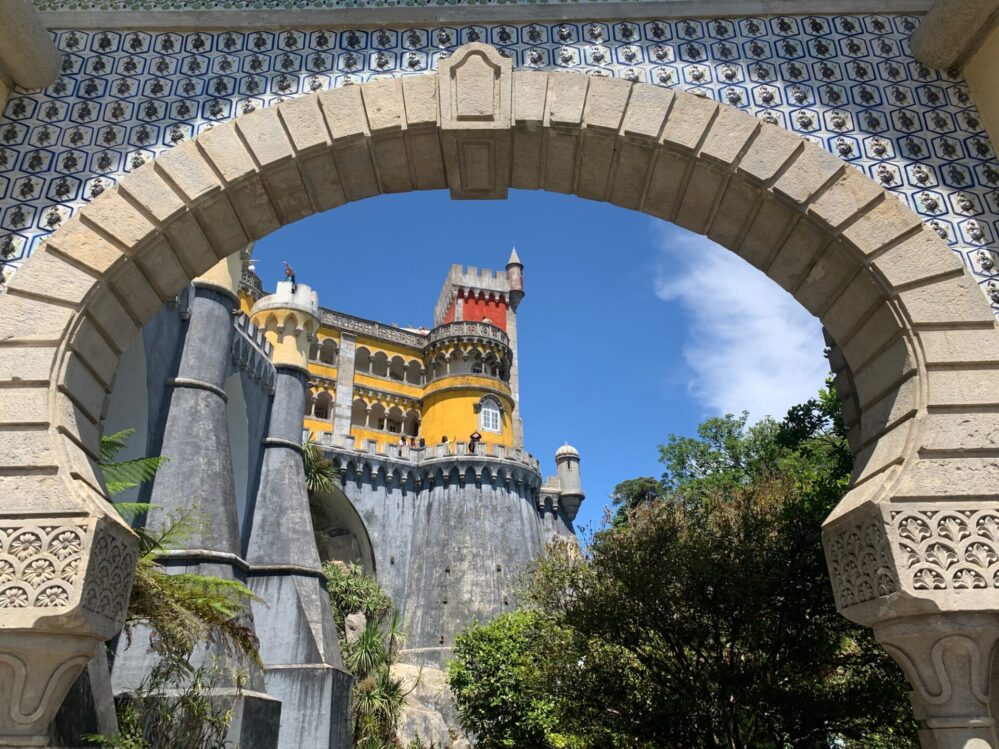
SPECIAL CORRESPONDENT Katie Pesznecker is on the move again with her husband Joe Niva. The Dynamic Duo traveled earlier this year to Portugal. Check out her report. Is there any question why Katie is our “Travel Stylist”? HA. –Scott
While honeymoon planning several years ago, we decided to visit Portugal. Friends advised that compared to other temperate and tantalizing European destinations, this coastal country often proved cheaper and less touristy. When the pandemic came, our plans were shelved – but not forgotten. Recently, we finally visited this lovely country and it was definitely worth the wait. With gorgeous scenery, fascinating history, great wine, and friendly people, Portugal checked all our boxes.
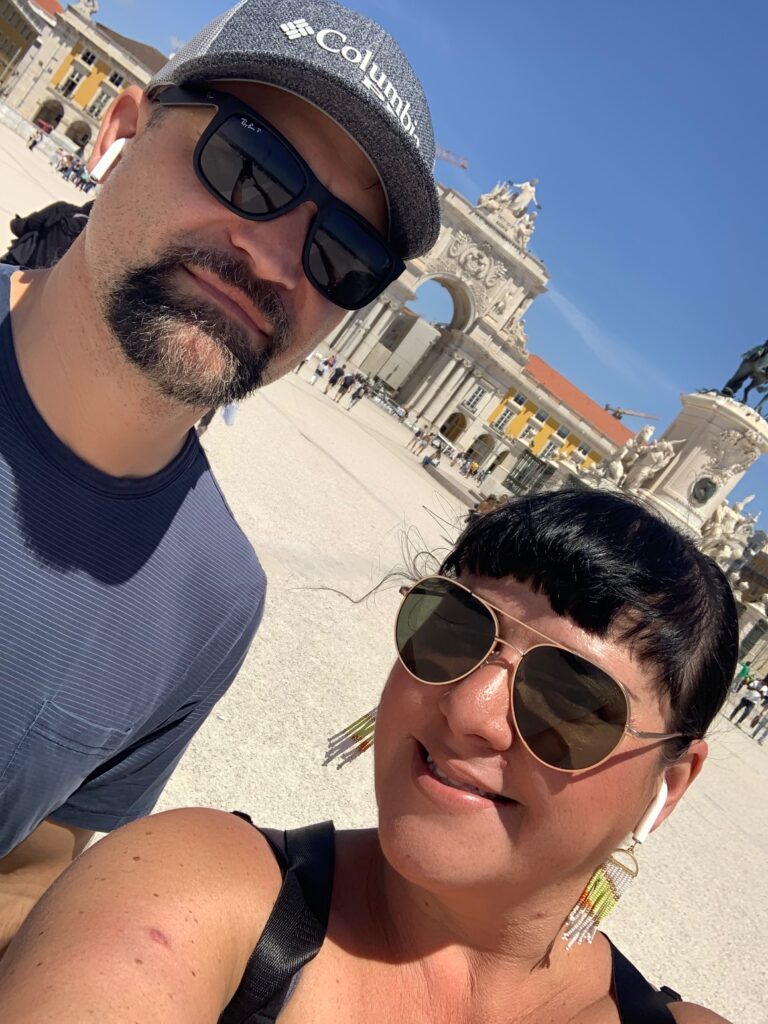
We started our adventure in the seaside enclave of Estoril. This resort town is only 11 miles from Lisbon but feels worlds away. Known for golfing, sunshine, and beaches, it’s also home to a decades-old casino.
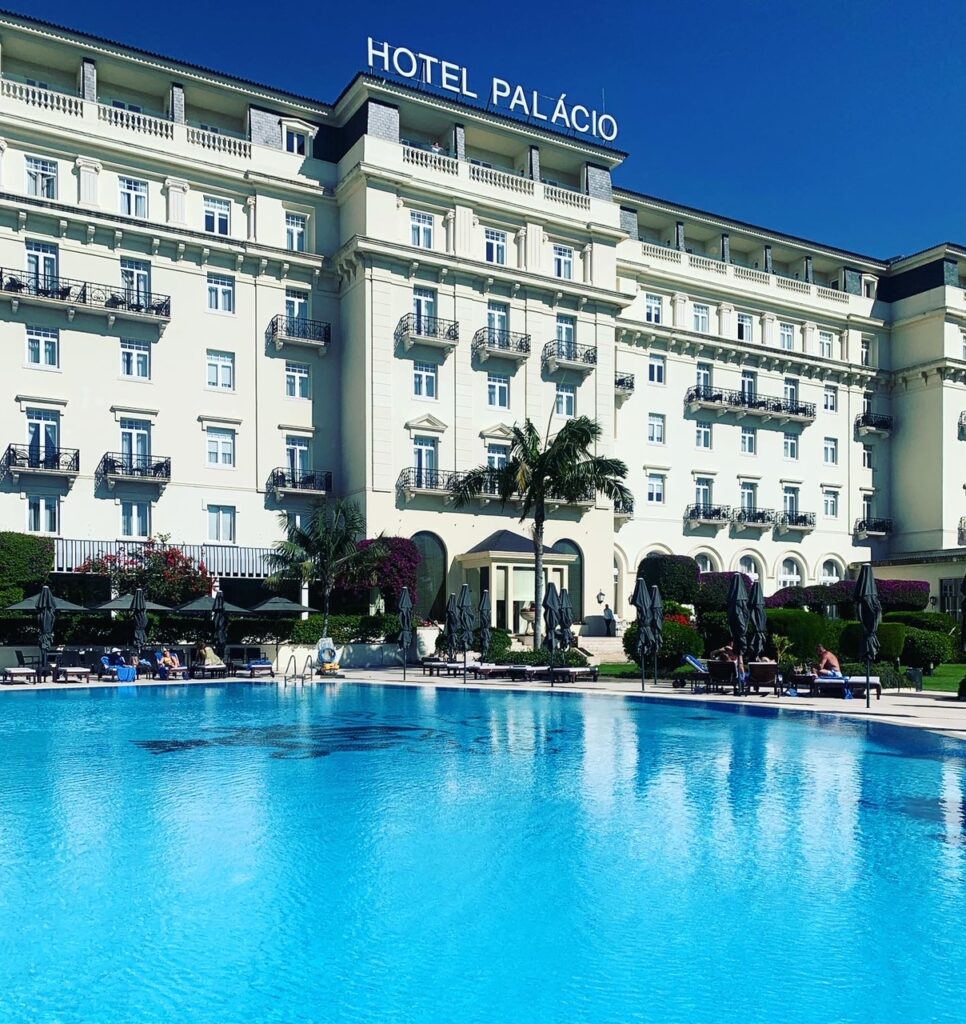
We stayed at the Palacio Estoril, an elegant hotel that has hosted royalty, ex-pats, wartime spies – and even one Ian Fleming, who famously stayed at the hotel in the shadow of the aforementioned gaming palace while writing his first James Bond novel, Casino Royale.

This hotel teems with old-world glamour; guest rooms are large and lovely, black-and-white photos of famous guests line high-ceilinged halls, and the sprawling grounds feature a ginormous pool, plentiful chaise lounges and a patio bar. With the beach nearby, we enjoyed strolling along tiled sidewalks and drinking Portuguese wine in the sunshine.
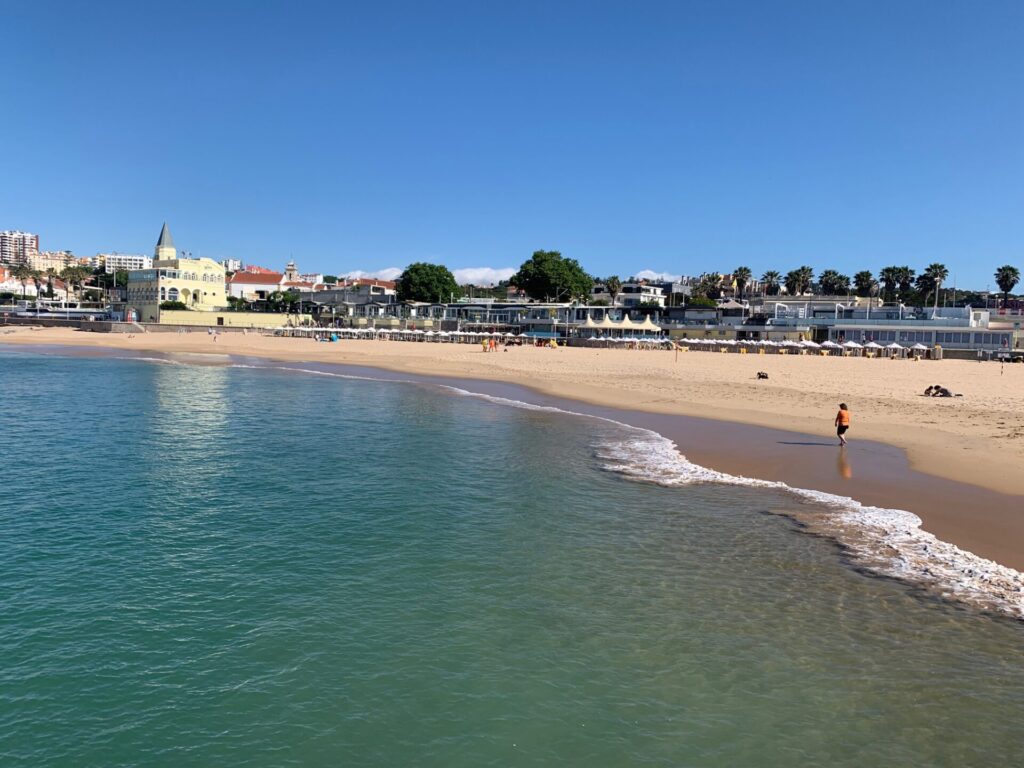
The hotel’s fine dining restaurant, the Four Seasons, was understated and elegant, staffed by a small fleet of attentive waiters and sommeliers. Other diners included a chatty group of British men fresh off the golf course, and at one corner table, an Oscar-winning American actress.
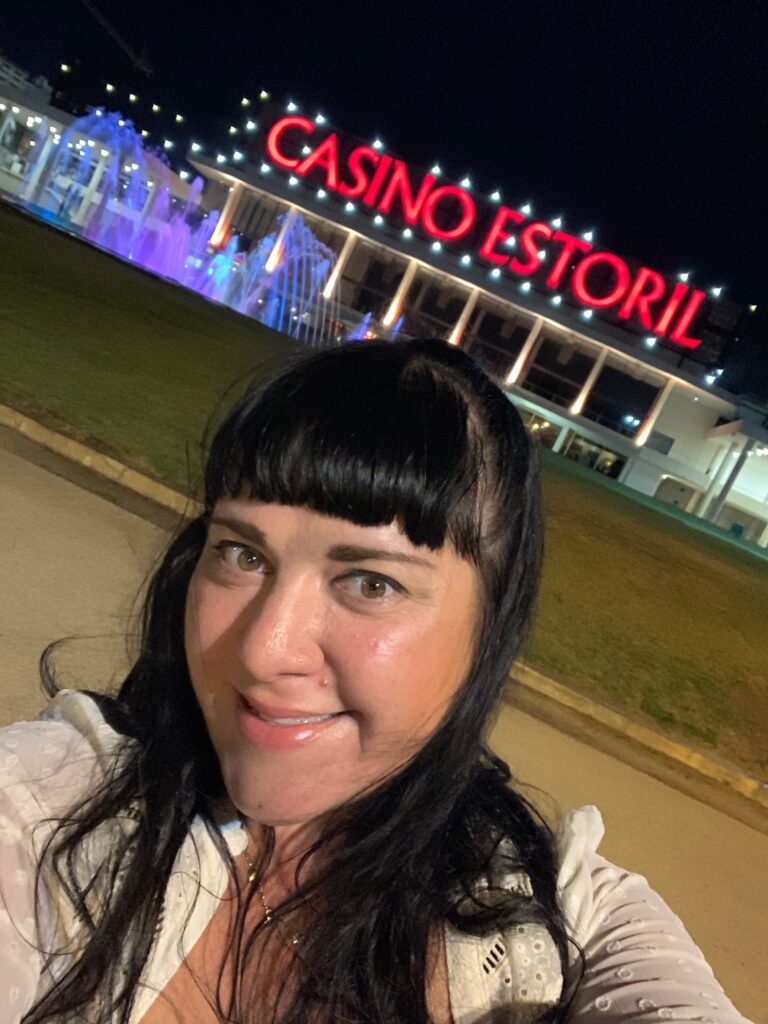
After dinner, it was time to check out the casino. Construction on the Casino Estoril began in January 1916. It’s one of the largest and oldest casinos in Europe. The friendly staff helped us navigate entry, which required showing passports and signing up for entry cards to operate the turnstiles.
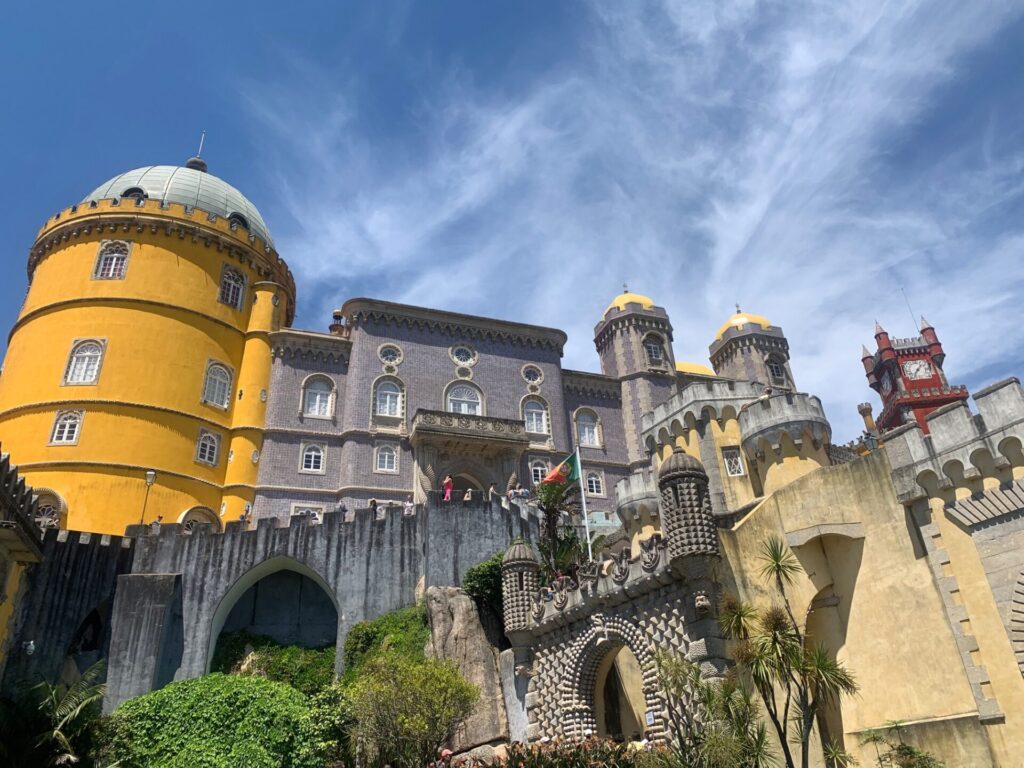
Our second day in Estoril, we called an Uber (super cheap in the Lisbon area) and headed to Sintra. Sintra is a huge tourist draw thanks to its stunning scenery and bounty of beautiful historic spots. These include the Sintra National Palace, the ruins of a Moorish castle, pretty parks and gardens, and perhaps the best-known and most-photographed spot of all, the colorful Pena Palace.
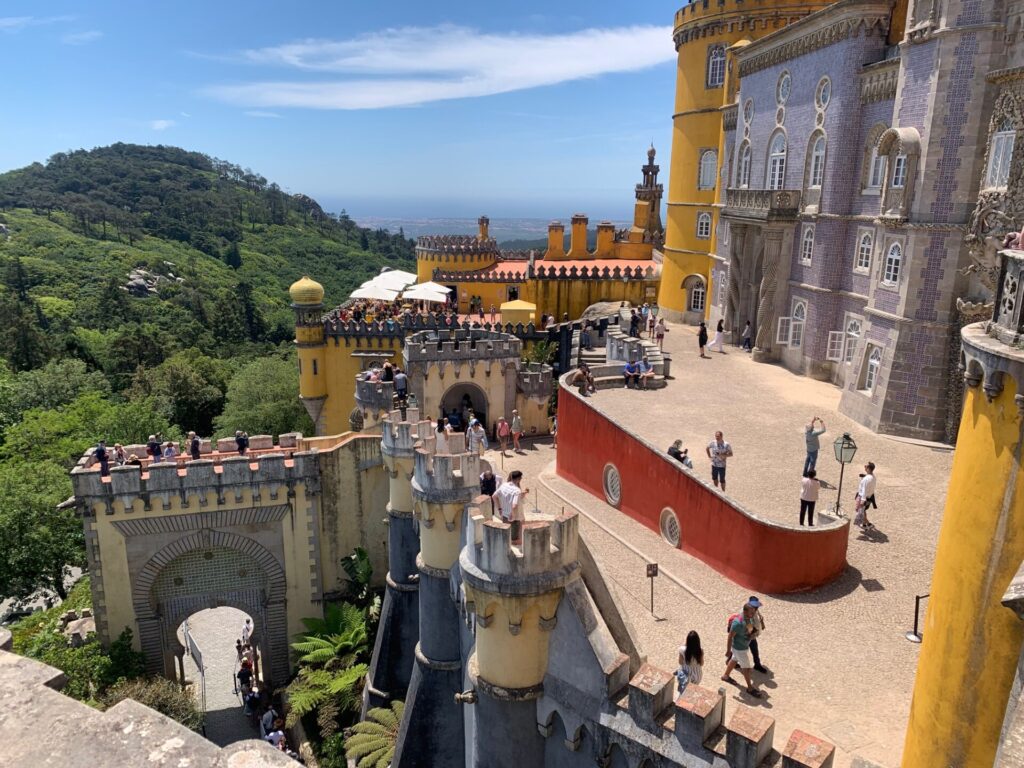
Pena Palace sits at 1,600 feet, high atop the forested hills that define the Sintra landscape. Our twisty journey via Uber wove through the town’s narrow streets before accelerating upward into the forest. Buy tickets online in advance to save a little money and avoid lengthy lines. Tickets are specific to a timeslot and staff are sticklers about only admitting visitors during their allotted window. From the admission gates, make the short steep walk uphill to the palace; or pay €3 to skip the hike and use the onsite shuttle.
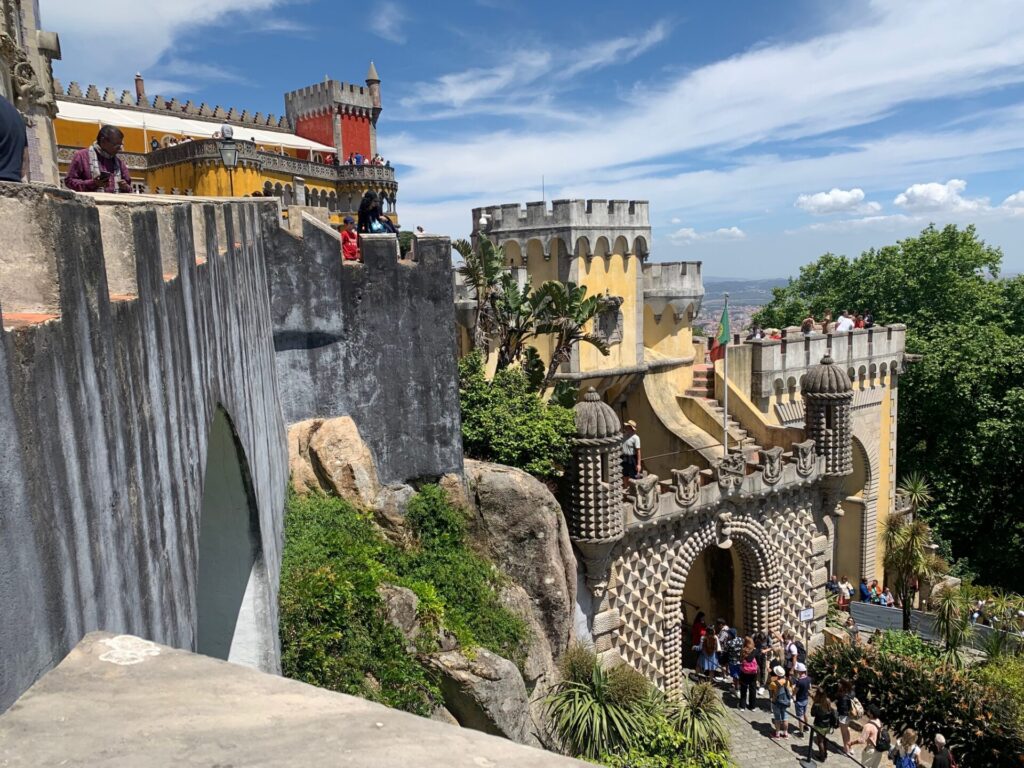
In the 12th Century, a chapel sat on the site of Pena Palace. That evolved into a monastery that – like many buildings in the Lisbon area – was destroyed by Portugal’s devastating 1755 earthquake. It wasn’t until King Consort Ferdinand II came along in the mid-1800s and decided to build a palace onsite to serve as a seasonal home for the royal family. His vision resulted in what we see today, a romantic and artistic citadel straight out of a fairy tale, with imaginative colors, whimsical turrets and towers, and incomparable views.

The entry fee is worth the walk around the terraces alone but you can also duck inside this architectural wonderland. Stunning interiors feature elegant carving work on walls and ceilings, intricate tiles and designs, and placards detailing the historical significance of the palace to the Portuguese royal family. For Ferdinand II, it was obviously all about the details, as every corner, nook and turn of this palace is dripping in artistic style.
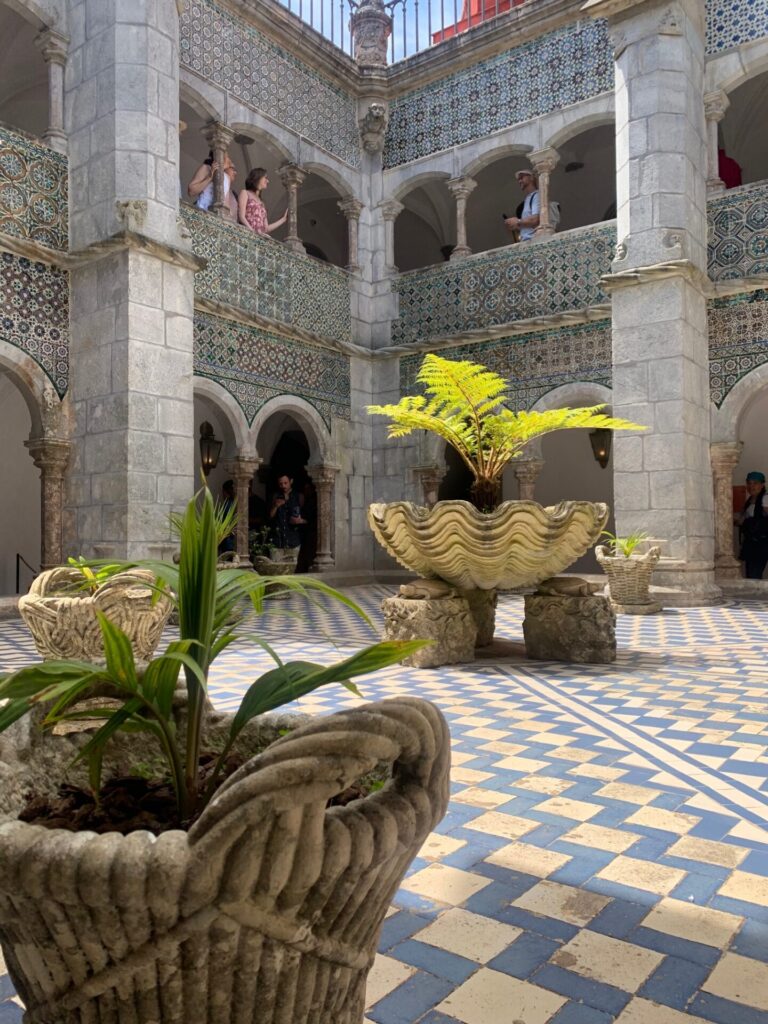
Even with its timed entry system, Pena Palace was packed with people and we were ready for some solitude – and snacks! We hopped into one of the many waiting tuktuks, three- or four-wheeled open-air ATVs that offer everything from from short-distance taxi service on up to full-day tours.
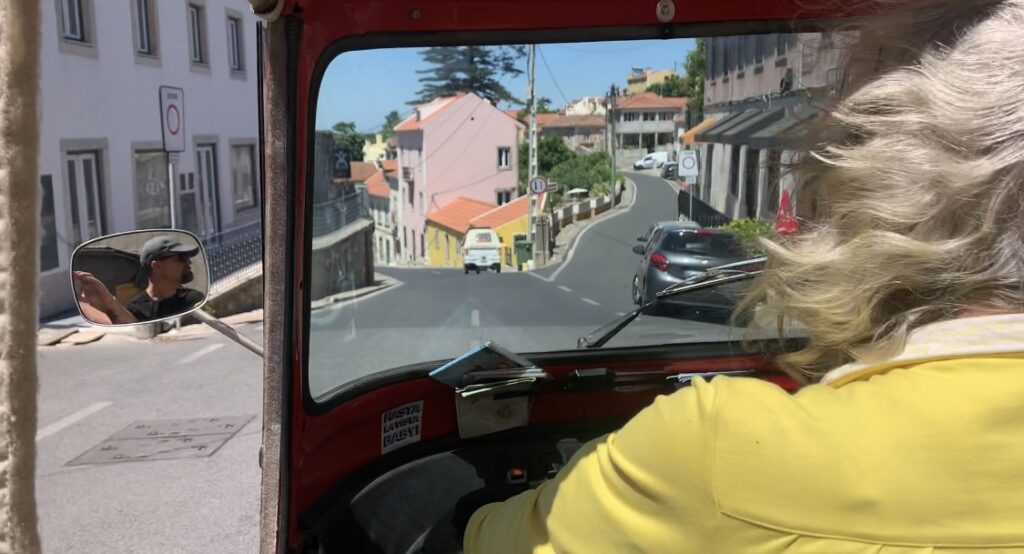
Our chatty Australian driver tore down the winding hill, dropping down to town-level in no time, pointing to interesting sights along the way. She recommended an excellent café with a view: Casa Das Minas.

We followed a stone path up a short set of steps, through a garden grotto, to a lovely hillside home that once housed a small school. We sat at a shaded terrace table, nibbling on complimentary peanuts and olives and sipping Portuguese wine and beer, enjoying the peaceful ambiance and the sweeping views of town below.

After that, it was fairly easy to find our way on foot downhill to the town center. We did a bit of shopping before calling an Uber to return to Estoril. After our long Alaska winter, I was eager to get back to the hotel pool. But we could have easily spent an entire day in Sintra, had we added more historic and notable stops to our agenda. The town is easy to navigate and accessible by cheap and frequent trains from Lisbon.
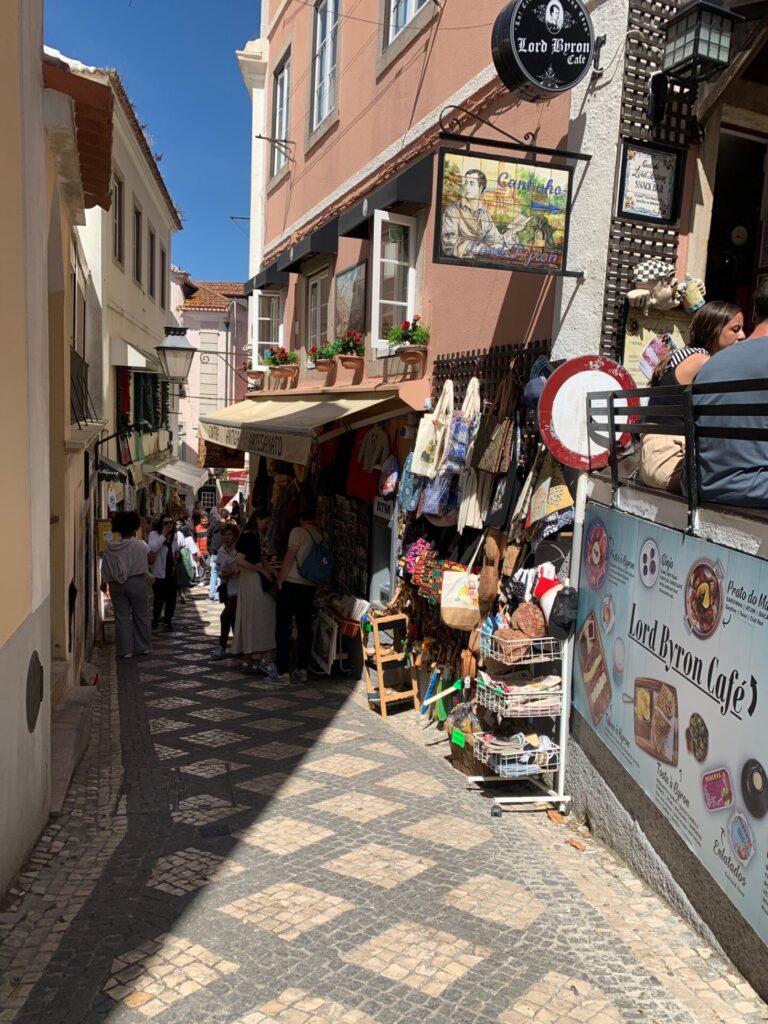
Next up was Lisbon, Portugal’s capital and largest city. Lisbon was largely destroyed by the aforementioned 1755 earthquake and the follow-up tsunami and fires. Under the vision and leadership of Prime Minister Sebastião José de Carvalho e Melo, the 1st Marquis of Pombal, it was rebuilt. Today, the lower town reflects principals of modern urban design, with pleasing harmony among its structures, and vibrant market squares and parks.
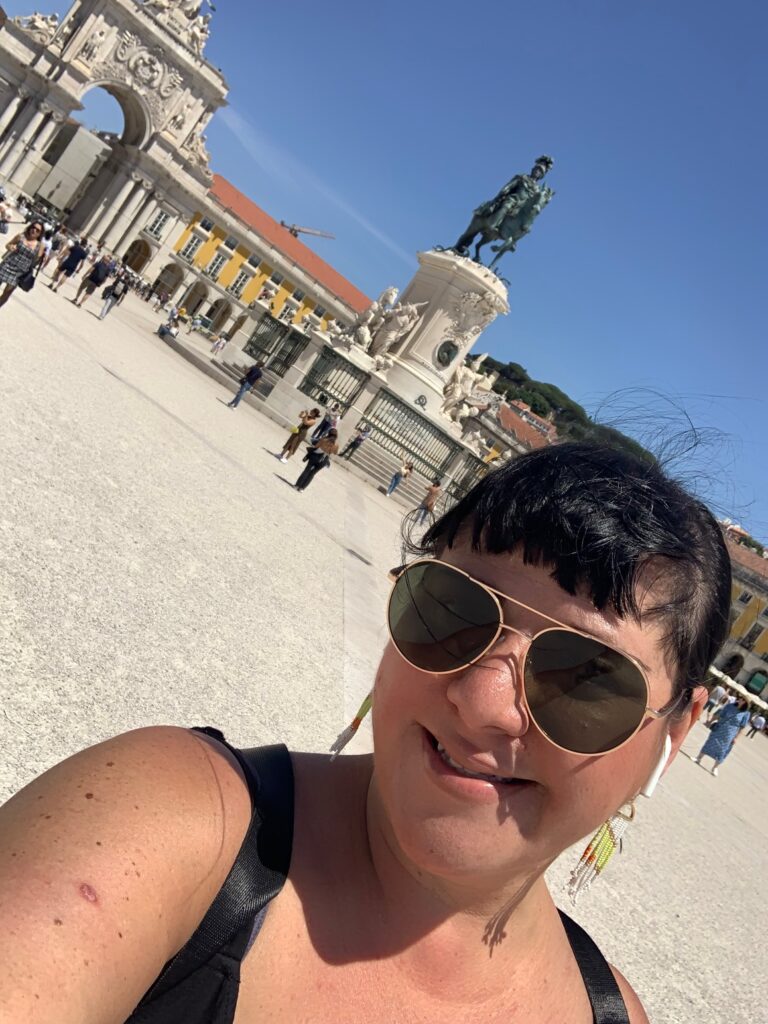
We downloaded a Rick Steves walking tour of Lisbon, starting at the Rua Augusta Arch. This was our first time trying one of Steves’ free, downloadable tours, and it was easy to follow, featuring plenty of appearance from local Portuguese guides. The arch itself was built in the mid-1800s, a monument to the city’s rebirth after the quake. It was sobering to stand in this expansive square: facing the arch, you see the city of Lisbon unfurling; facing away, and there was the Tagus River that delivered the deadly tsunami that terrifying day so long ago.

The walking tour delivered us to some of the town’s most notable tourist destinations while talking about Portuguese traditions and customs. We frequently paused the audio when something of interest caught our eye – like a shop selling cod cakes stuffed with melted Portuguese cheese, a sidewalk café with happy-hour vino verde wine, or a bakery whose storefront windows were stocked with tiny delectable pastries and desserts.
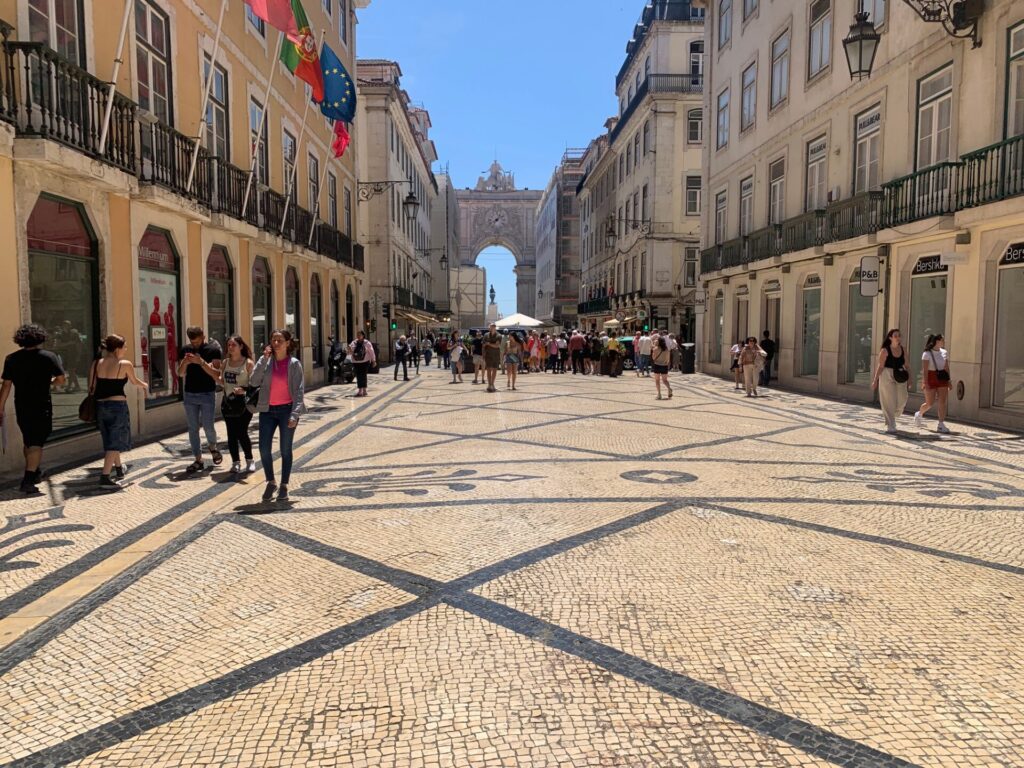
On our first night, we made our way to the Time Out Market, a conceptual food hall founded in 2014. It features a rotating roster of some three dozen Portuguese restaurants that are editorially curated by food critics, who invite only the best to open stalls at the market. We were told it was touristy but worth it, and while there were plenty of obvious visitors, the busy hall was packed with locals too. We enjoyed a bao bun stuffed with pickled vegetables and shredded pork, and spicy vegetable dumplings.

We ended our first night in Lisbon at Pink Elephant, a trendy bar conveniently kitty-corner from our hotel. It was late enough that a balcony table was open. Sipping our cocktails while people-watching passersby below was a peaceful way to wind down an action-packed first day.

In Lisbon, we stayed at Hotel do Chiado, a centrally located boutique hotel that looks deceptively small from its street-level entryway, but inside features surprisingly large guest rooms and an incredible rooftop bar with views of the entire town below. The hotel was reasonably priced for the Lisbon market at about $240 a night.

For our second full day in Lisbon, we enlisted in one of our favorite travel experiences: a walking food tour! These are really a fantastic way to get to know your surroundings, interact with other travelers, take advantage of knowledgeable local guides, and eat lots of seriously good food.

I’m a fan of smaller tours, and we signed on for a day of sampling Portuguese classics, hosted by Devour Tours, a reputable company that hosts tasting tours across Europe (and the U.S.!). Our cozy group of 10 included a friendly flight attendant from Washington DC, couples from Phoenix, Georgia, and the Midwest, and a young Scotsman who works as an engineer aboard a super yacht owned by a Russian billionaire. Needless to say, conversation flowed easily.

Our tour stretched across more than four fun hours and several miles. We started by sampling sweet Portuguese doughnuts ad drinking coffee at the longstanding National Bakery. We visited a local butchery and saw salted cod, which the Portuguese are crazy about. When our guide presented a generous amount of Iberian pork, we took turns peeling off gossamer layers of the succulent delicacy, trading glances of wide-eyed satisfaction as it practically melted in our mouths.
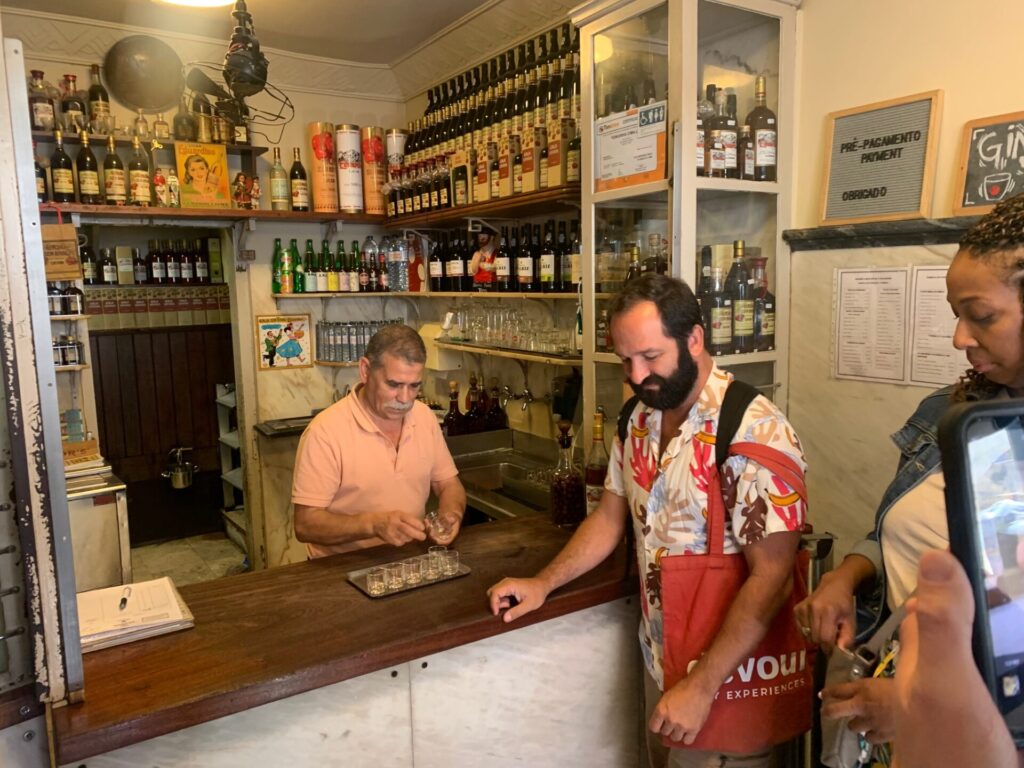
The tour had to include a stop at a Ginjinha stall, Ginjinha Sem Rival, to try shots of Portugal’s famed sour cherry liquor. Our guide called this “a walking by drink” and you can order it with or without a few of the soaked cherries included. At €1.50 a shot, let’s just say these tart, tasty treats became a staple of our brief time in Lisbon.
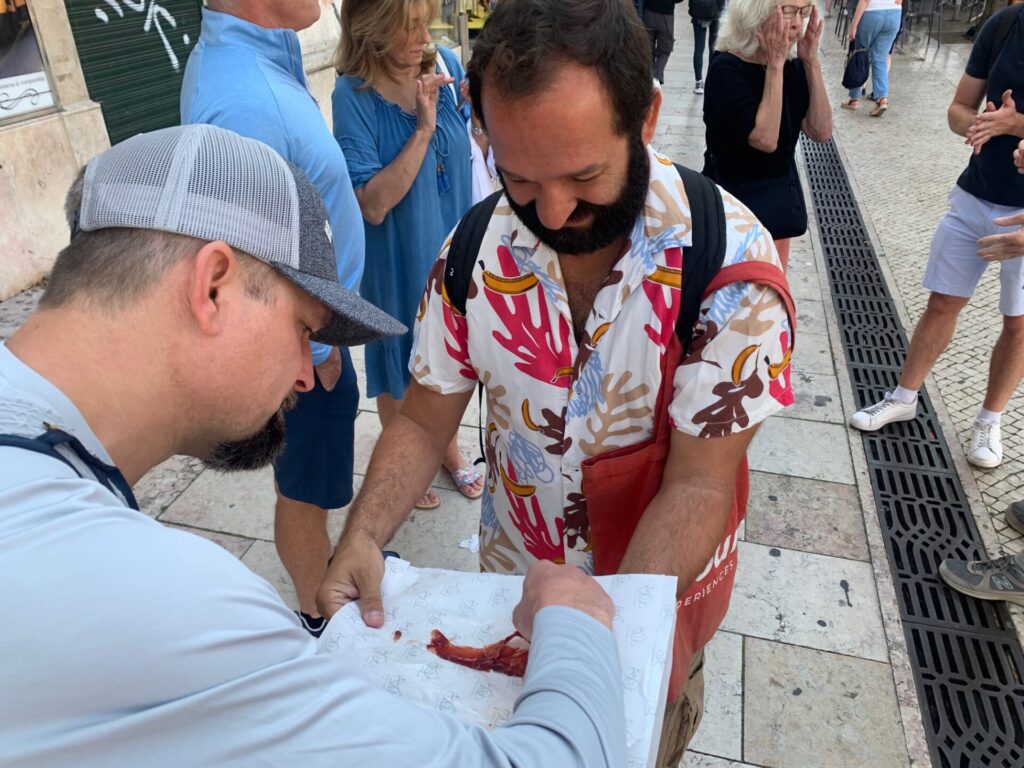
Further along on our tour, we sat together at Tendinha Do Rossio at the edge of busy Rossio Square to sample pork bifana sandwiches. Marinated and thinly pounded slices of pork are served on crusty-but-soft buns with mustard and hot oil. Sometimes these simple treats are the best, and these sandwiches were a culinary highlight and triggered a enthusiastic chorus of “obrigado” (thank you, in Portuguese).
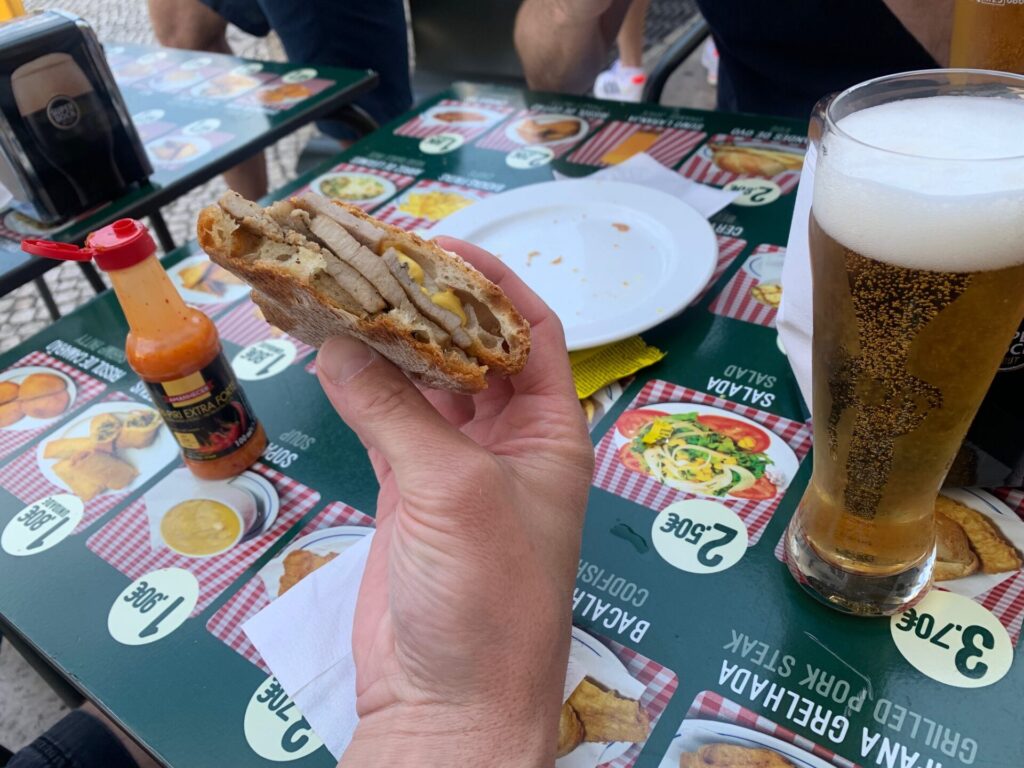
Believe it or not, this all happened before we technically ate lunch. For that, we headed uphill into the Bairro Alto neighborhood, a sleepy maze of side streets by day that burst with bars and clubs at night. Our guide led us to a nondescript restaurant, a place we doubtfully would have noticed on our own accord. Seated family-style, our group shared a Portuguese bean stew called feijoada (fish-wad-ah), cod cakes and rice, and what the Portuguese call Jewish sausage, served topped with a fried egg. And of course, more wine!
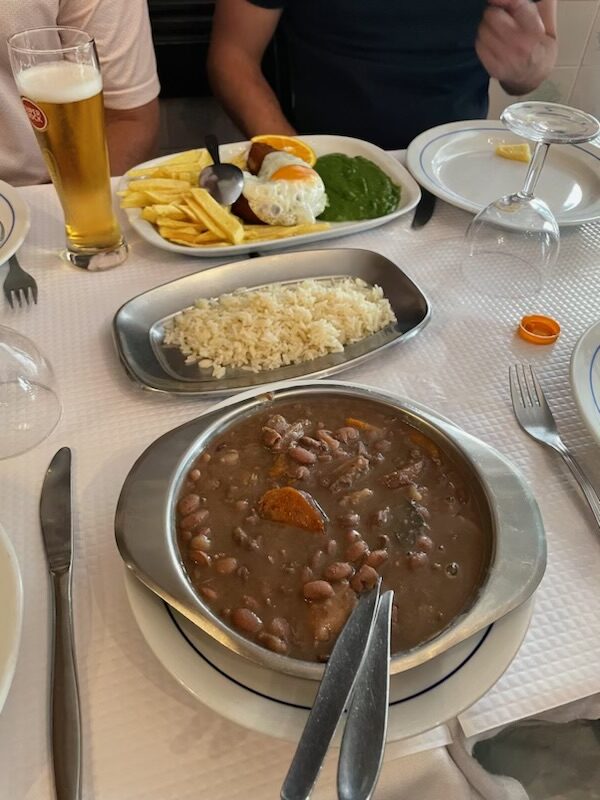
You can’t end a food tour without dessert, and our day wrapped by sampling a Portuguese staple, the pastel de nata.

Lovingly hand made, these egg custard are traditionally topped with cinnamon, and made for a sweet ending to an incredible day.
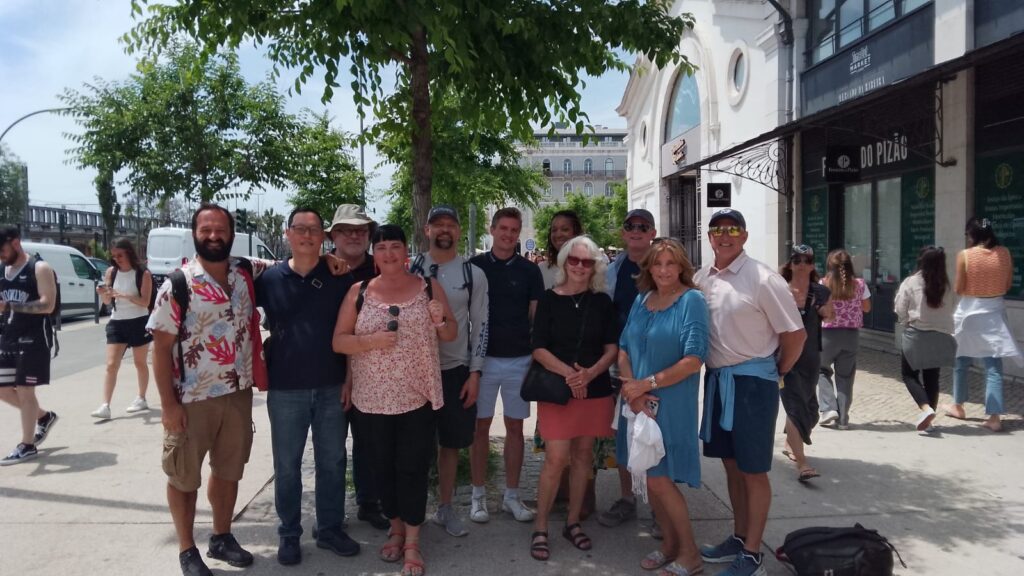
Our time in Lisbon was threaded with plenty of sightseeing, too. We walked its narrow tiled alleys, ducked into shops, paused at historic points of interest, strolled through churches, saw ruins of the great earthquake, and road the classic funiculars that carry pedestrians up and down the steepest hills. Other high points included visiting Livraria Bertrand, the world’s oldest book store, where they’ll stamp your purchase upon request.
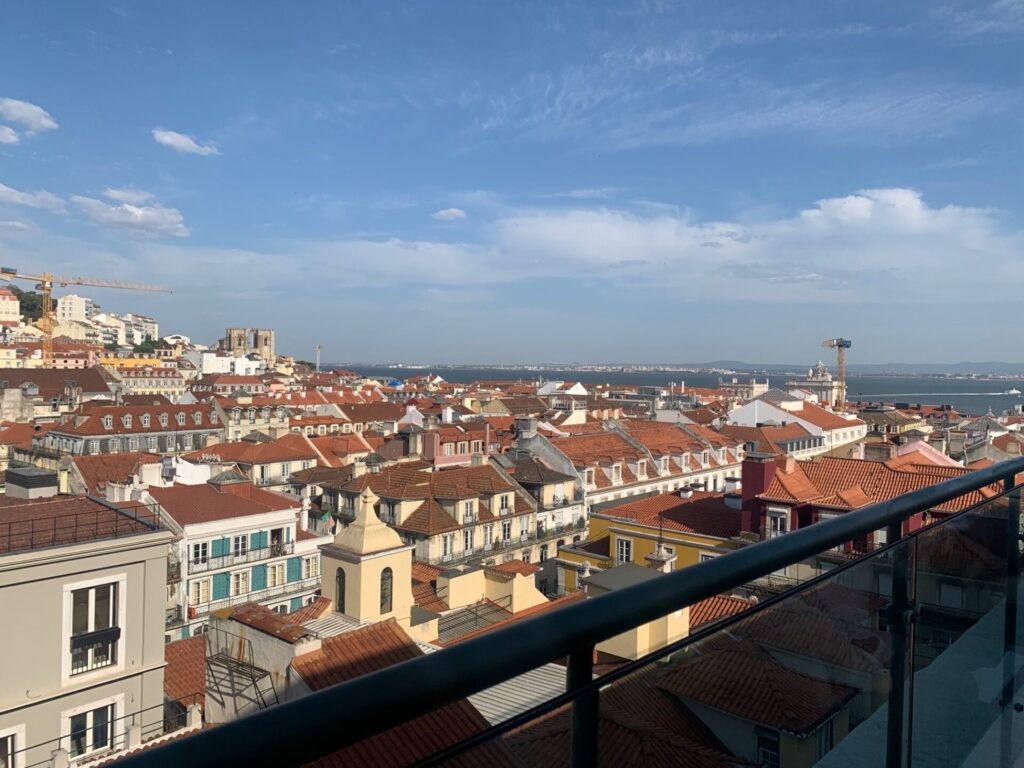
The people in Lisbon were incredibly friendly – and notably industrious. You won’t see businessmen taking three-beer lunches, like in London, or folks popping out of work for lengthy midday siestas, like in Madrid. As one new acquaintance told us, the Portuguese people pride themselves on being resilient hard-workers who are perhaps less gregarious and more modest than their Spaniard neighbors.
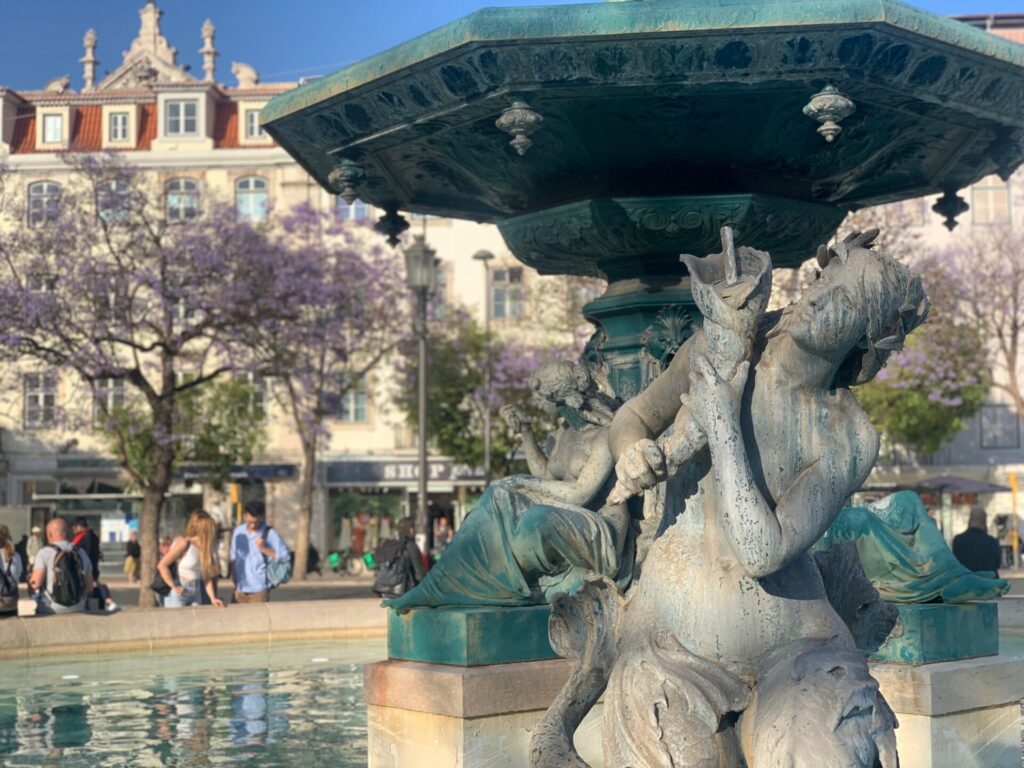
In terms of international travel, Portugal proved easy to navigate, communicate, and find fun things to do. It was also notably affordable, compared to European travel in general. Our original 2020 travel plan had us also spending time in the southern part of the country, the Algarve. I look forward to returning one day to further explore the Lisbon area and also venture south and to other parts of this very special and unique country.
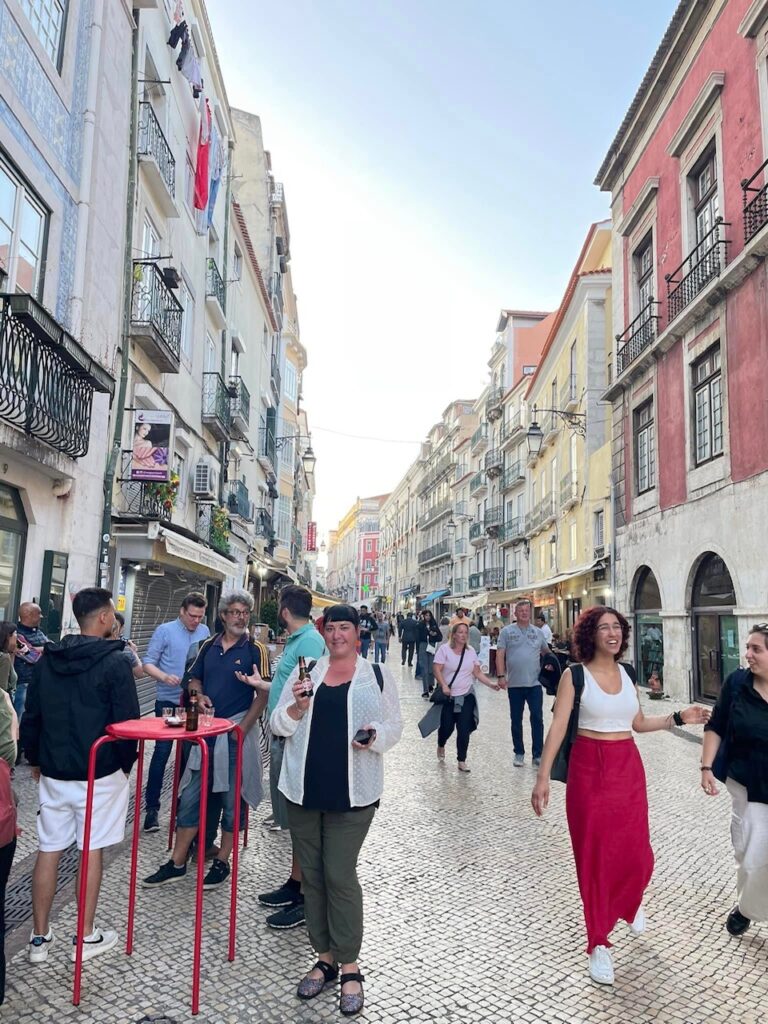
Share this Post

